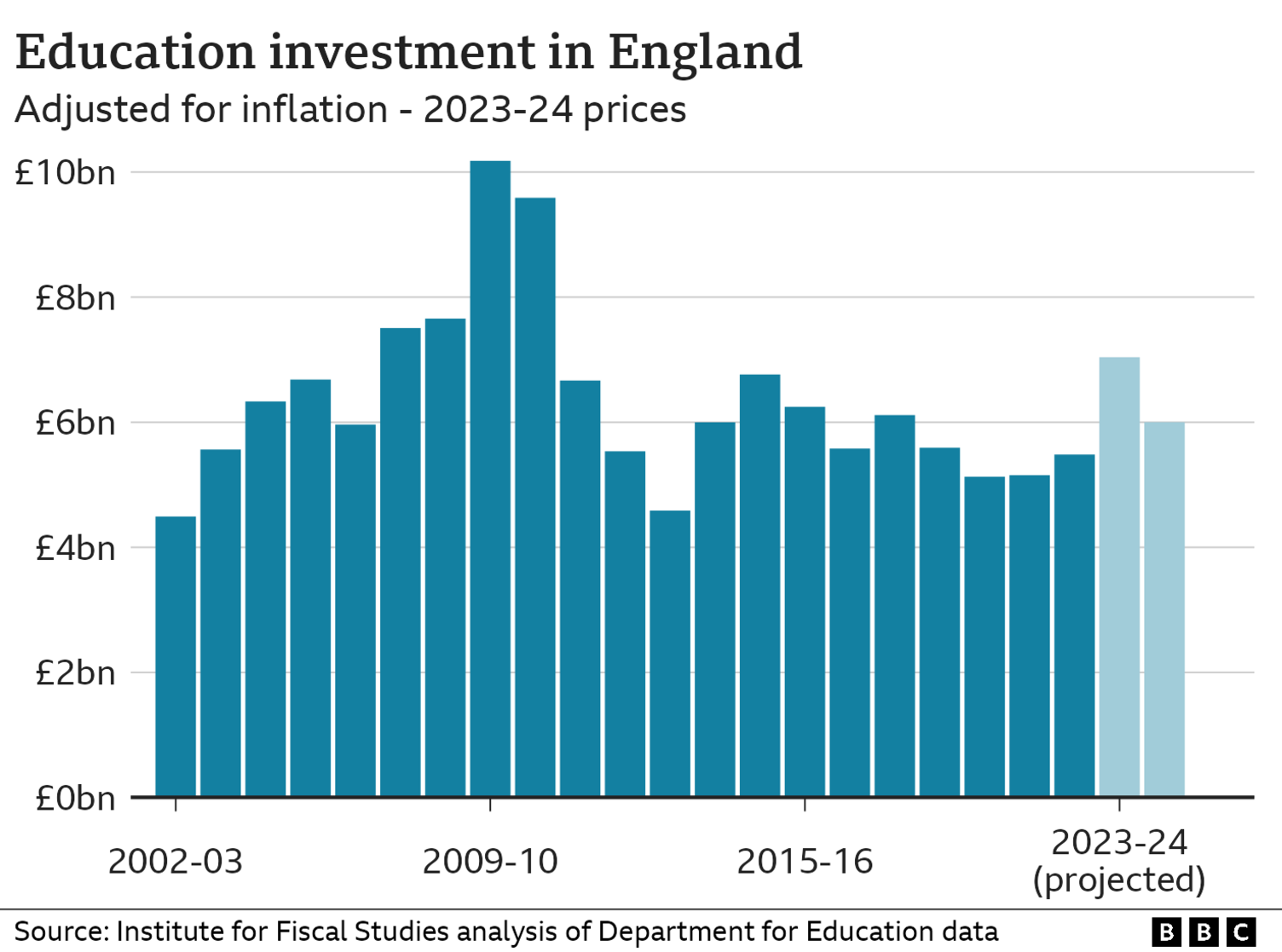RAAC: How long have we known about unsafe concrete in schools?
- Published

The government says it closed down parts of some schools in England because of evidence about unsafe concrete.
But problems with the material have been known about for many years. Questions are now being raised about the timing of big decisions on funding for school buildings.
Scores of public buildings constructed with new concrete
Between the 1950s and 1990s the material, known as RAAC (reinforced autoclaved aerated concrete), was used mostly in flat roofing, but also in floors and walls.
It offered a cheaper alternative to standard concrete.
But its short lifespan means its use in permanent buildings has caused problems.
Use of RAAC is stopped as concerns emerge
1994: Concerns about the risks of using RAAC in public buildings started to appear in research.
1996: Excessive cracking and corrosion was found in some roof planks that had been designed before 1980.
The finding - from a former government-owned research laboratory called the Building Research Establishment - led to the use of RAAC being effectively stopped.
However, the report also said: "There is no evidence so far to suggest that RAAC planks pose a safety hazard to building users".
1999: Owners of buildings with pre-1980 RAAC were to told to get them inspected. The advice came from a body set up to spot risks to building safety - the Standing Committee on Structural Safety (SCOSS).
Education infrastructure spending peaks
2010: Spending on education infrastructure reached its peak in 2010 - the final year of the last Labour government. During its 13 years in power, school spending on areas including buildings and computers had risen steadily.
Labour also ran a scheme called Building Schools for the Future, which was later axed by the new Conservative-led government. A government-commissioned review of the programme said value for money had been consistently poor. A National Audit Office report said, external the costs were higher than they needed to be because of avoidable delays and extensive reliance on consultants by local authorities.

Spending on school buildings falls
2014: Investment fell under the coalition government and reached its low-point in 2014.
However, in the same year, the government launched its own schools building scheme. This led to an increase in spending - which is still in place - but not at 2010 levels.
Concrete failures prompt further warnings and inspections
2017: A three-year inspection programme was launched by the government. Part of its aim was to look at the materials such as RAAC in schools.
2018: A concrete block fell from the ceiling, external of a school in Kent, more than 20 years after the BRE's report about excessive cracking.
The incident prompted warnings, external from both the Local Government Association and DfE. Organisations responsible for school buildings were told to take steps to confirm the safety of their construction.
2019: Schools with 40-year-old RAAC planks were told they had now passed their expected service life. SCOSS - which issued the alert, external - added that schools should consider replacing the planks.
2019: Following the completion of the inspections of school buildings, Jonathan Slater - the top civil servant in the DfE at the time - said they concluded that between 300 and 400 schools needed replacing each year.
2020: In order to maintain, repair and rebuild schools for the next years, the DfE said it would require £4bn a year.
Government pledges to rebuild schools
2021: A pledge to rebuild 500 schools over the next decade was announced by the government in its Spending Review. However, this amounts to only about 50 a year.
Schools warned RAAC is 'liable to collapse'
February 2021: The DfE issues a guide, external on how to identify RAAC. A questionnaire was sent out the following year to organisations responsible for school buildings, asking whether they had any of the material.
September 2022: Surveyors were sent into schools to see if there was RAAC present and to rate it as "critical" or "non-critical", following the launch of a government programme.
In the same month, a stark warning that "RAAC is now life-expired and liable to collapse" was issued by the Office of Government Property.
June 2023: The government was told that insufficient funding was making the risk more severe by the National Audit Office - an independent watchdog that tracks government spending.
The government is spending £15bn - or about £1.7bn a year - on "maintaining and improving the condition of school buildings and grounds". However, that is significantly less than the amount the DfE previously said was needed to bring school buildings up to scratch.
August 2023: A RAAC panel failed at a school in England that would have been classed as non-critical.
Education Secretary Gillian Keegan said the incident led her to take action - just days before the new school year was due to begin.

